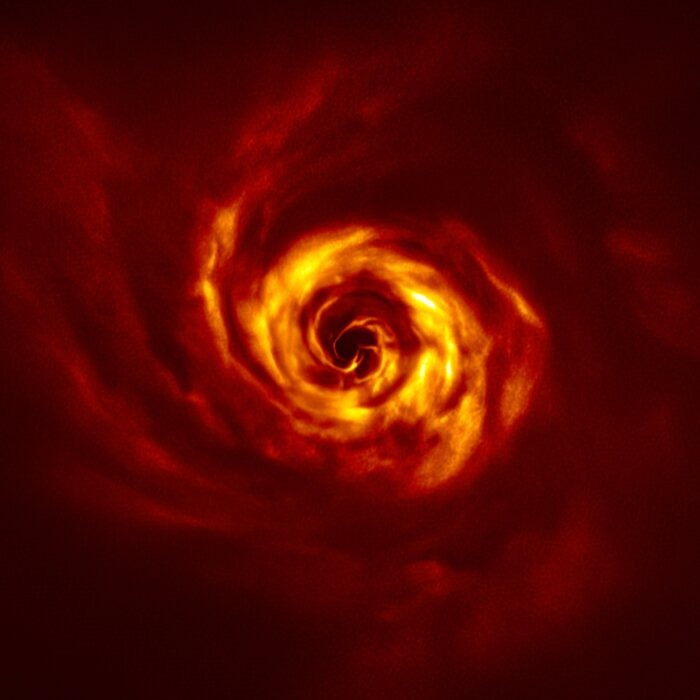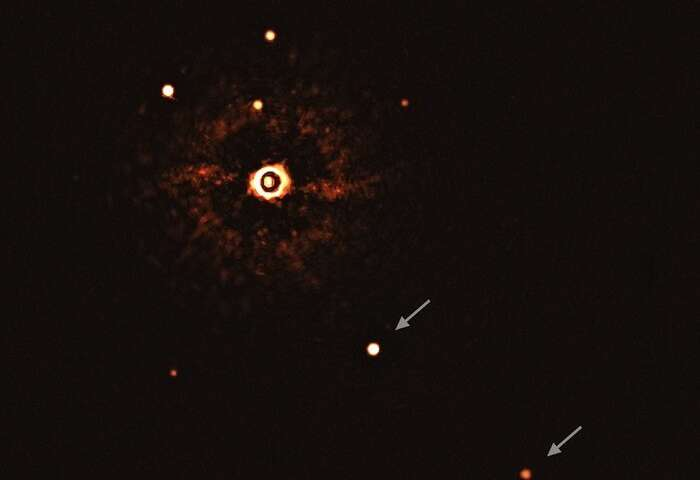dv said:
Bubblecar said:
Very impressive. But bear in mind these planets are very much further away from their star than Jupiter & Saturn are from our sun. They’re also more massive than our gas giants.
I wonder why this system, which is 300 ly away, was the first multiplanet system to be so imaged. Must be some closer candidates.
Good points. Great image. I have a huge amount of respect for the VLT when it comes to narrow field of view interferometric measurements, like this one. I see now why they picked this one. They only imaged young sunlike stars, and chose only those because the telescope can only see hot planets. For a hot planet to exist a long way from the central star, the planet has to be very young.
Here’s the original press release https://www.eso.org/public/news/eso2011/
These images were possible thanks to the high performance of the SPHERE instrument on ESO’s VLT in the Chilean Atacama desert. SPHERE blocks the bright light from the star using a device called coronagraph, allowing the much fainter planets to be seen. While older planets, such as those in our Solar System, are too cool to be found with this technique, young planets are hotter, and so glow brighter in infrared light. By taking several images over the past year, as well as using older data going back to 2017, the research team have confirmed that the two planets are part of the star’s system.
Hard to believe that the following image is an actual photograph through the VLT, not an artist’s impression, of a protoplanetary dust cloud around AB Auriga. From https://www.eso.org/public/images/eso2008a/

